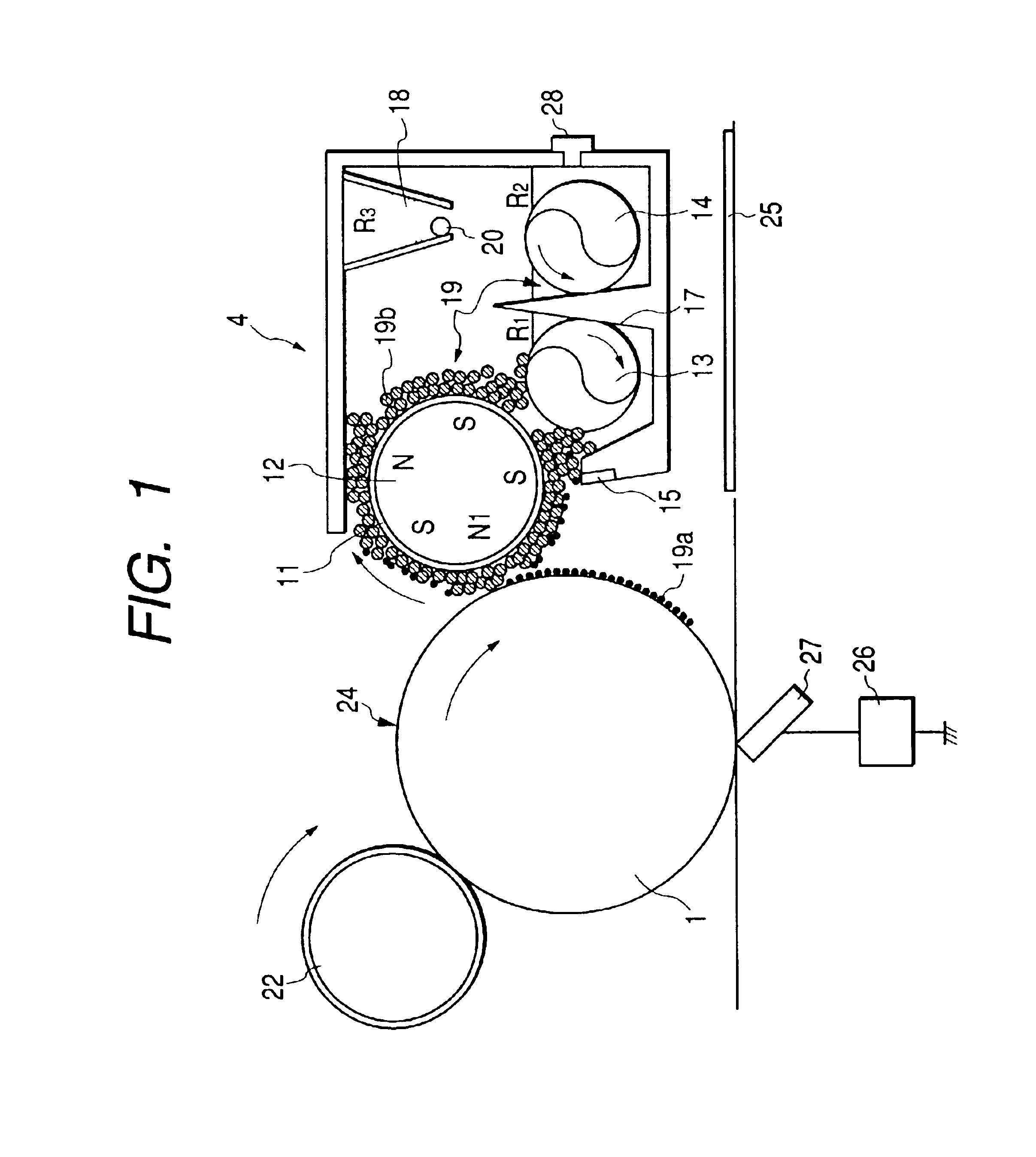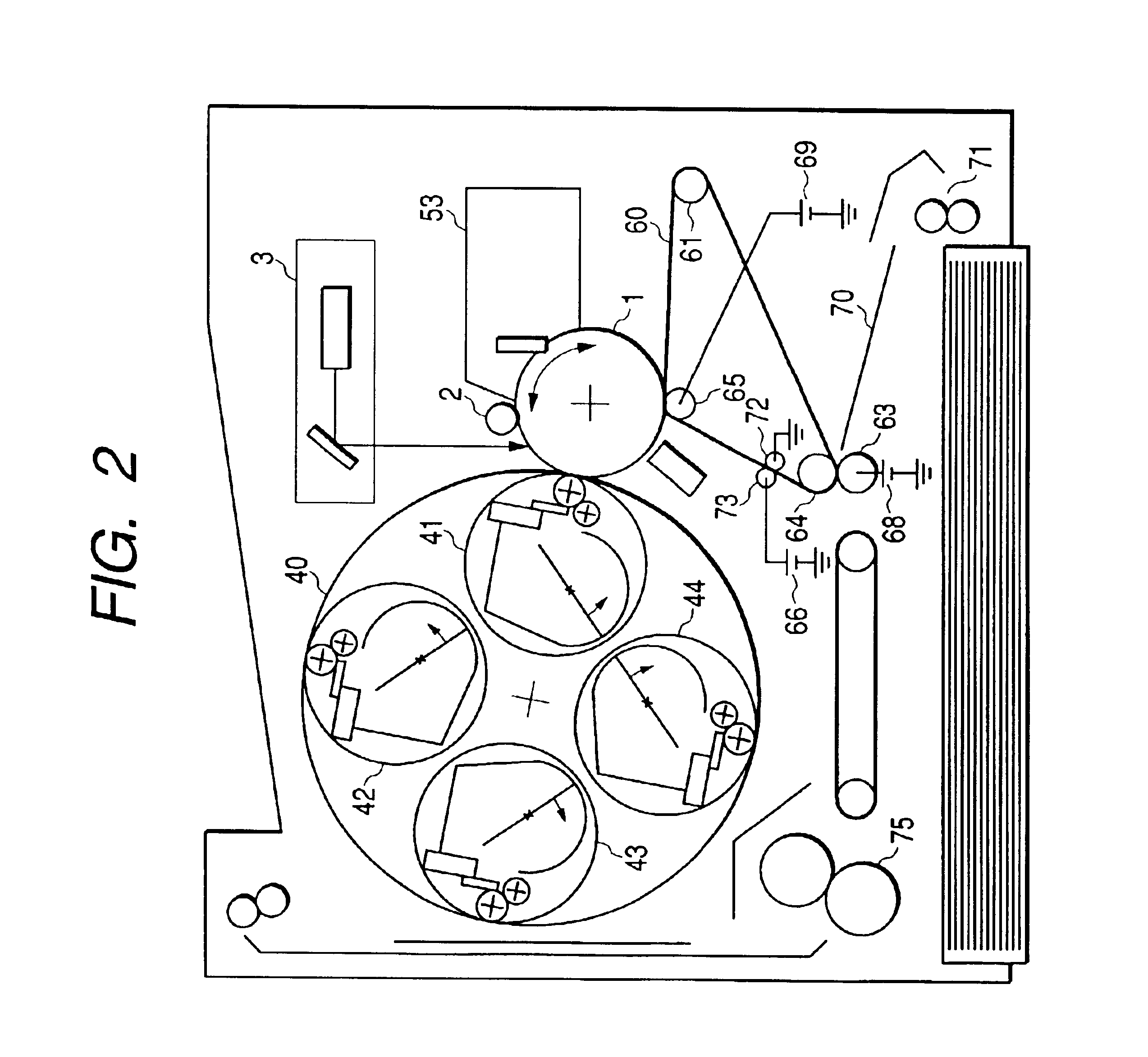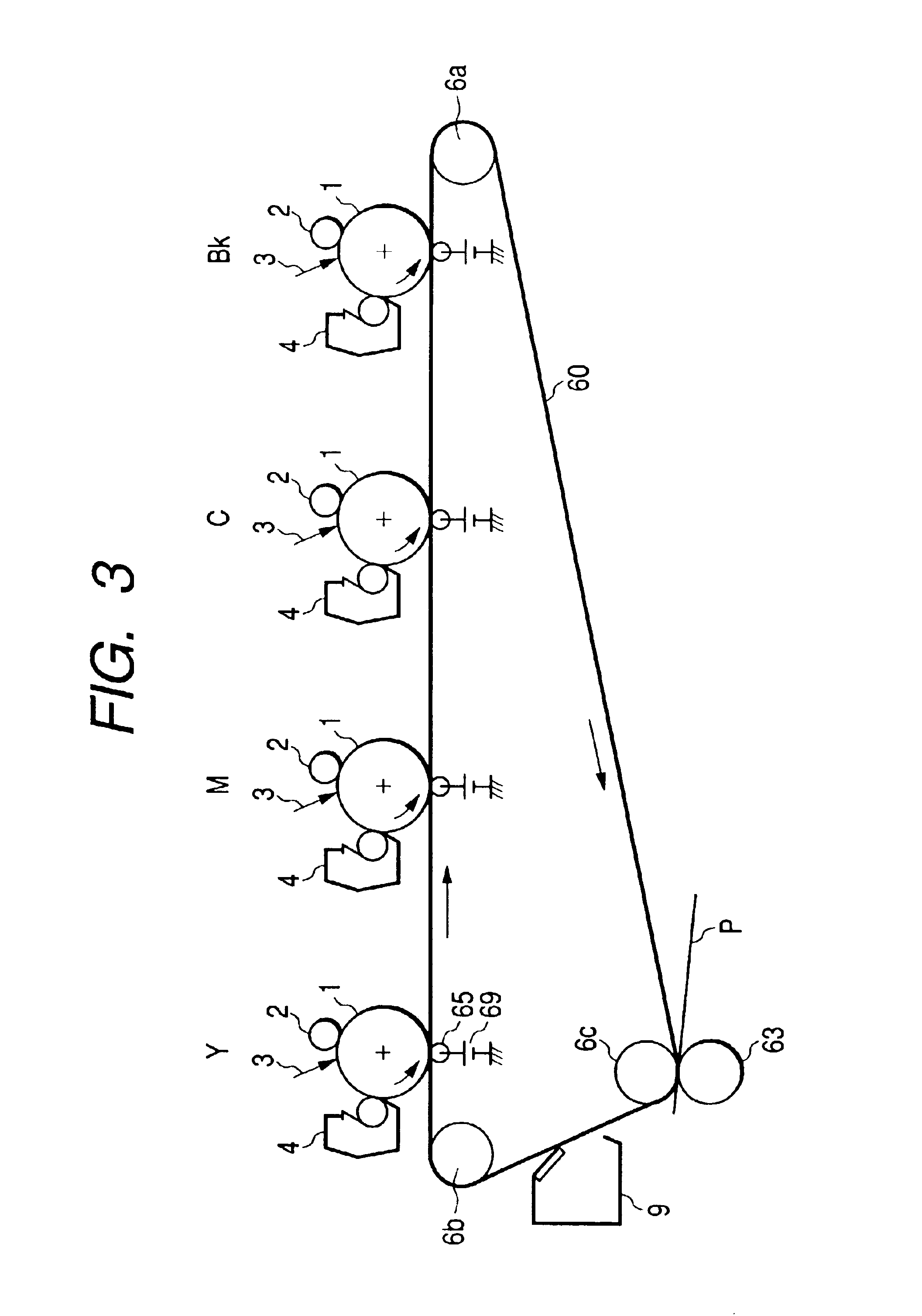Full-color image-forming method, and two-component developer kit for forming full-color images
a developer kit and full-color technology, applied in the field of full-color image-forming methods, can solve the problems of defective images, inability to use cardboard such as post cards, difficult to remove toner scattering problems or to satisfy image characteristics, etc., and achieve excellent color balance and color non-uniformity.
- Summary
- Abstract
- Description
- Claims
- Application Information
AI Technical Summary
Benefits of technology
Problems solved by technology
Method used
Image
Examples
production example 1
Carrier Production Example 1
(by weight)Phenol 7.5 partsFormalin solution (formaldehydeL about 40%; methanol:11.25 partsabout 10%; the remainder: water)Fine magnetite particiales lipophilic-treated with 1.0% 62 partsby weight of Γ-glycidoxypropyltrimethoxysilane(average particle diameter: 0.24 νm; reisitivity:5 × 105 •· cmFine α-Fe2O3 particles lipophilic-treated with a 1.0% by 26 partsweight of Γ-glicidoxypropyltrimethoxysilane(average particle diameter: 0.60 νm; reisitivity:2 × 109 •· cm
The lipophilic treatment of the magnetite and α-Fe2O3 particles used here was carried out by adding 1.0 part by weight of γ-glycidoxypropyltrimethoxysilane to each of 99 parts by weight of magnetite and 99 parts by weight of α-Fe2O3 particles, followed by stirring for preliminary mixing, at 100° C. for 30 minutes in a Henschel mixer.
Keeping the above materials and 11 parts by weight of water at 40° C., these were mixed for 1 hour. To the slurry thus formed, 2.0 parts by weight of 28% by weight amm...
production example 2
Carrier Production Example 2
A carrier 2 was obtained in the same manner as in Carrier Production Example 1 except that the γ-aminopropyltrimethoxysilane (A) was added in an amount changed to 5% by weight. Physical properties of the carrier 2 obtained are shown in Table 1.
production example 3
Carrier Production Example 3
A carrier 3 was obtained in the same manner as in Carrier Production Example 1 except that the γ-aminopropyltrimethoxysilane (B) was added in an amount changed to 0.025% by weight. Physical properties of the carrier 3 obtained are shown in Table 1.
PUM
 Login to View More
Login to View More Abstract
Description
Claims
Application Information
 Login to View More
Login to View More - R&D
- Intellectual Property
- Life Sciences
- Materials
- Tech Scout
- Unparalleled Data Quality
- Higher Quality Content
- 60% Fewer Hallucinations
Browse by: Latest US Patents, China's latest patents, Technical Efficacy Thesaurus, Application Domain, Technology Topic, Popular Technical Reports.
© 2025 PatSnap. All rights reserved.Legal|Privacy policy|Modern Slavery Act Transparency Statement|Sitemap|About US| Contact US: help@patsnap.com



